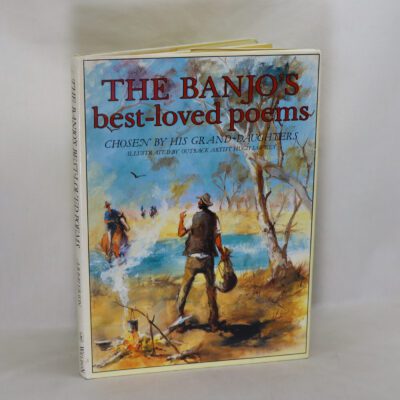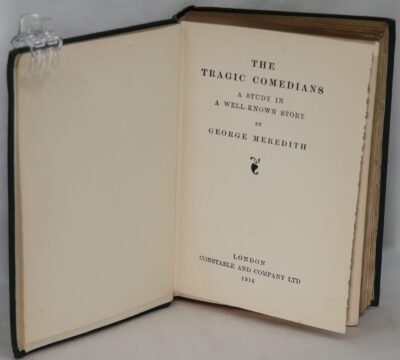The Beach of Falesa.
By Robert Louis Stevenson
Printed: 1959
Publisher: Folio Society. London
| Dimensions | 13 × 23 × 2 cm |
|---|---|
| Language |
Language: English
Size (cminches): 13 x 23 x 2
Condition: As new (See explanation of ratings)
Your items
Item information
Description
In a fitted box. Dark green cloth binding with gilt title on the spine. Back embossed seated figure, also pattern on top and bottom edges of front board.
It is the intent of F.B.A. to provide an in-depth photographic presentation of this book offered so to almost stimulate your feel and touch on the book. If requested, more traditional book descriptions are immediately available.
“The Beach of Falesá” is a short story by Scottish author Robert Louis Stevenson. It was first published in the Illustrated London News in 1892, and later published in book form in the short-story collection Island Nights’ Entertainments. It was written after Stevenson moved to the South Seas island of Samoa just a few years before he died there.
“The Beach of Falesá” is a short story by Scottish author Robert Louis Stevenson. It was first published in the Illustrated London News in 1892, and later published in book form in the short-story collection Island Nights’ Entertainments (1893). It was written after Stevenson moved to the South Seas island of Samoa just a few years before he died there.
John Wiltshire, a Scottish copra trader on the fictional South Sea island of Falesá. Upon arriving on the island, he meets a rival trader named Case, who (in an apparently friendly gesture) arranges for him to be “married” to a local girl named Uma in a ceremony designed to impress the natives but to be completely non-binding in the view of Europeans.
Wiltshire soon discovers that Uma has a taboo attached to her which causes all the other natives to refuse to do business with him, to Case’s profit. He also hears rumours of Case having been involved in the suspicious deaths of his previous competitors. Although realising that he has been tricked, Wiltshire has genuinely fallen in love with Uma, and has their marriage legalised by a passing missionary.
Wiltshire gradually learns that Case’s influence over the villagers stems from their belief that he has demonic powers, as a result of his simple conjuring tricks as well as strange noises and visions they have experienced at a “temple” he has built in the forest. Upon investigating, Wiltshire finds that these experiences are also tricks produced by imported technologies such as luminous paint and Aeolian harps.
Wiltshire sets out that night to destroy the temple with gunpowder. Case confronts him and the two men fight, resulting in Case’s death.
The story concludes with Wiltshire several years later living on another island, still happily married to Uma, worrying about what will happen to his mixed-race children.
Robert Louis Stevenson (born Robert Lewis Balfour Stevenson; 13 November 1850 – 3 December 1894) was a Scottish novelist, essayist, poet and travel writer. He is best known for works such as Treasure Island, Strange Case of Dr Jekyll and Mr Hyde, Kidnapped and A Child’s Garden of Verses.
Born and educated in Edinburgh, Stevenson suffered from serious bronchial trouble for much of his life but continued to write prolifically and travel widely in defiance of his poor health. As a young man, he mixed in London literary circles, receiving encouragement from Andrew Lang, Edmund Gosse, Leslie Stephen and W. E. Henley, the last of whom may have provided the model for Long John Silver in Treasure Island. In 1890, he settled in Samoa where, alarmed at increasing European and American influence in the South Sea islands, his writing turned away from romance and adventure toward a darker realism. He died in his island home in 1894.
A celebrity in his lifetime, Stevenson’s critical reputation has fluctuated since his death, though today his works are held in general acclaim. In 2018 he was ranked, just behind Charles Dickens, as the 26th-most-translated author in the world
Want to know more about this item?

Related products
Share this Page with a friend












